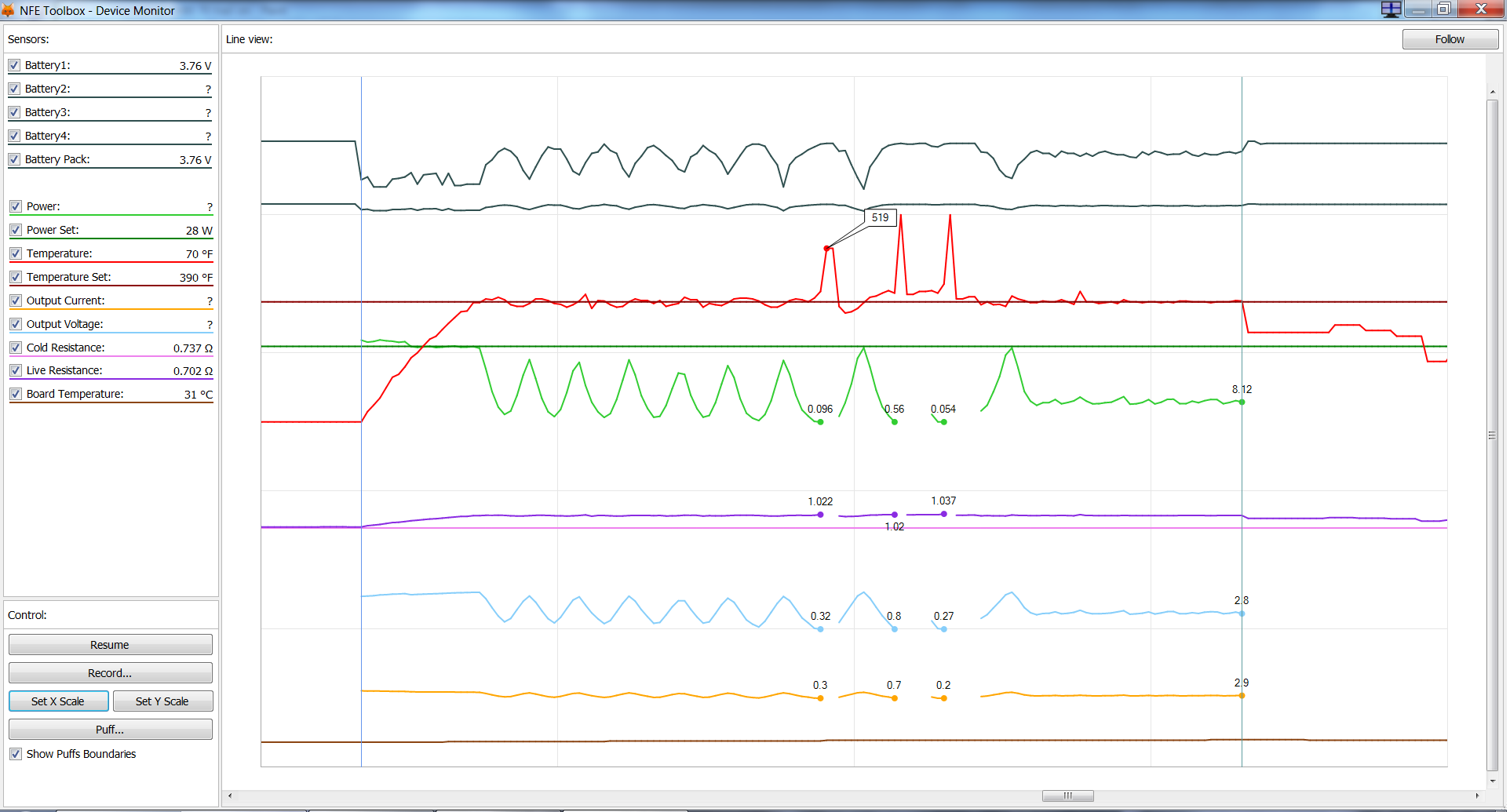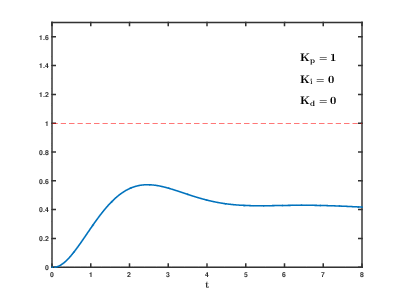Hi box modders, donut vapers, I've been playing around with the PI control some more from my last post, and I think it's worthwhile to offer some updates:
First off, it seems arcticfox and myevic have different parameters for the PI control, or some of the different mods and particular attys I'm using them with need quite different variables to vape nice, powerfully and evenly as I like.
It seems myevic benefits from slightly higher "I" values for a DT V3 donut (10mm at least) than it needs with arcticfox. That is what I saw on my first PI testing with some cuboid minis, vtc minis and myevic.
But on arcticfox: 900, 20 for PI seems to work spot on, just like bizwax had shared with us earlier. Quick ramp up, well timed ramp-down of watts for minimal overshoot, very stable watt and temp range. Using 900, 60 like my last post with AF resulted in excessive temp overshoot.

I took some NFE monitor screen grabs to show now.
This is a cuboid, TCR 200, 28w, 400F, PI 900 20 on AF170628 with a DTV3 10mm donut. These are reclaim hits at the end of the session, which explains the lower-than-usual watt load. It sees higher wattage on a fresh reload.
Just for extreme comparison, below, this is the next hit, same settings,
but PI control disabled. You can see the watts oscillates wildly before flattening out. These are the "transient atomizer shorts" that were a problem with AF a few releases ago which are largely fixed now. The good news, as bad as this graph looks, I still got a non-burned cloud, almost as even as with PI control. (those temp spikes are more theoretical, not real)
And a weird phenomena i see on some of my V3 donuts,
is a rising live-resistance reading when the mod isn't being fired.

I've put great effort into finding the cause of this, ensuring the wire leads are clean and tight, 510 connectors clean and firm. When I contact the donut with a dab tool and nudge it laterally, like when scooping up reclaim, it can make the live resistance jump, so I conclude it must be contact related, or a somewhat faulty V3 base. Despite this weirdness, it still works fine.... (i had a pic of this after the puff but missed it, but I got another example on the last mod in this post)
Here below is one more of the cuboid, vaping nicely with PI control. This puff just about emptied my donut and cup
Now, pivot back to the old myevic...
My earlier preferred settings of 900, 60 for PI (D at 0) seemed still a bit sluggish for me, ramping down wattage too early, helping to
completely avoid initial temp overshoot, but taking too long to reach temp. Nudging those figures up while using several different mods, mostly VTC and cuboid minis,
I've settled at 1000, 70 for PI on myevic now, but I still need to evaluate that on a couple more mods.
Pictured above is a VTC mini, 1100, 60 for PI. You can see we got a couple minor spikes, but I think those are more calculated than real, since the vapor output was steady throughout the puff. Temp and wattage bouncing within a narrow, acceptable range.

Like I said, I'm somewhat settling at 1000 70 now, back down from 1100 testing right here. The higher P might account for this spike?
Now to compare, below here is the same VTC mini and atty,
but PID control turned off, stock algo.
Actually, not that bad, right? Doesn't look vastly different, besides the fluke spike of the earlier graph. Despite looking solid on paper,
the vapor output feels a bit more steady and cool with PI control enabled. This particular vtc mini and DTV3 has a much more stable live resistance reading than the spikier cuboid pictured earlier, so it just goes to show you can still get pretty good results, no PI, sometimes.
Last mod in my series, just to compare, a different VTC mini and V3 medium donut, with
1000, 70 for PI. Still myevic here. This is another atty that has some drift on the live resistance reading, which can lead to some funny stuff on the NFE monitor and in actual vaping also, with numbers bouncing around wildly. Probably related to donut lead contact, since it can jump around when touching the donut.
Besides the couple temp spikes, which I think are pretty much flukes (vapor stream is steady throughout the puff), the performance is very good.
But the live resistance still rises after firing... weird

So here below is the same mod and atty,
but PI control turned off, you can easily see it's a mess

It doesn't actually burn up oil, but the vapor stream comes in visibly pulsing, halting puffs corresponding with the oscillating wattage and transient atomizer shorts.

No more of that! (this puff is just for a poor demonstration, no more need for that)
So, lots of stuff from me, as usual, hopefully this is of interest to other DT donut vapers who want to fine tune their vaping. I don't know the actual math behind PID control, but just starting from a good baseline setting and having a willingness to tweak it around, I seem to have improved my donuts' performance.

Last thing, I want to re-post this graphic showing the general curvature of PID control that
@Joaon had posted on this thread a while ago, since I found this instructive.
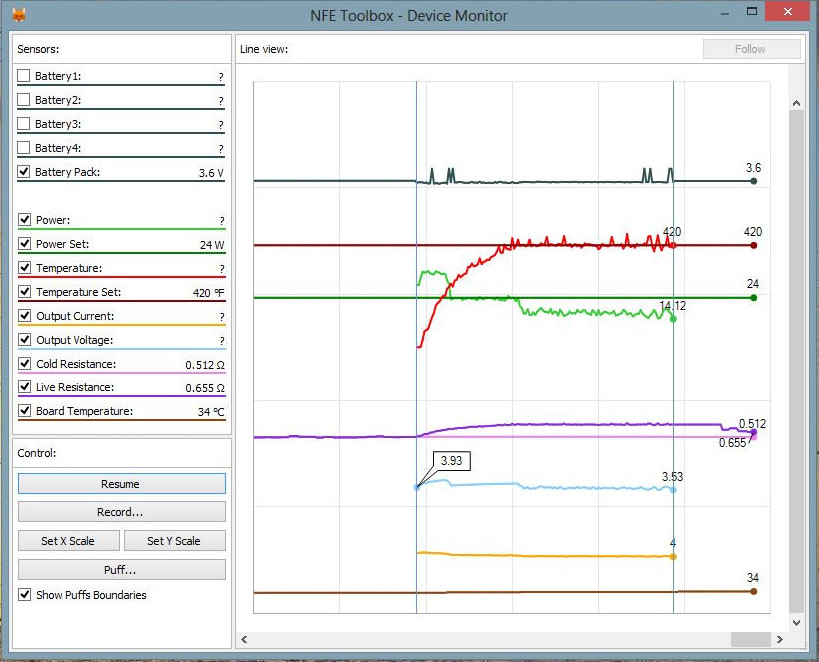
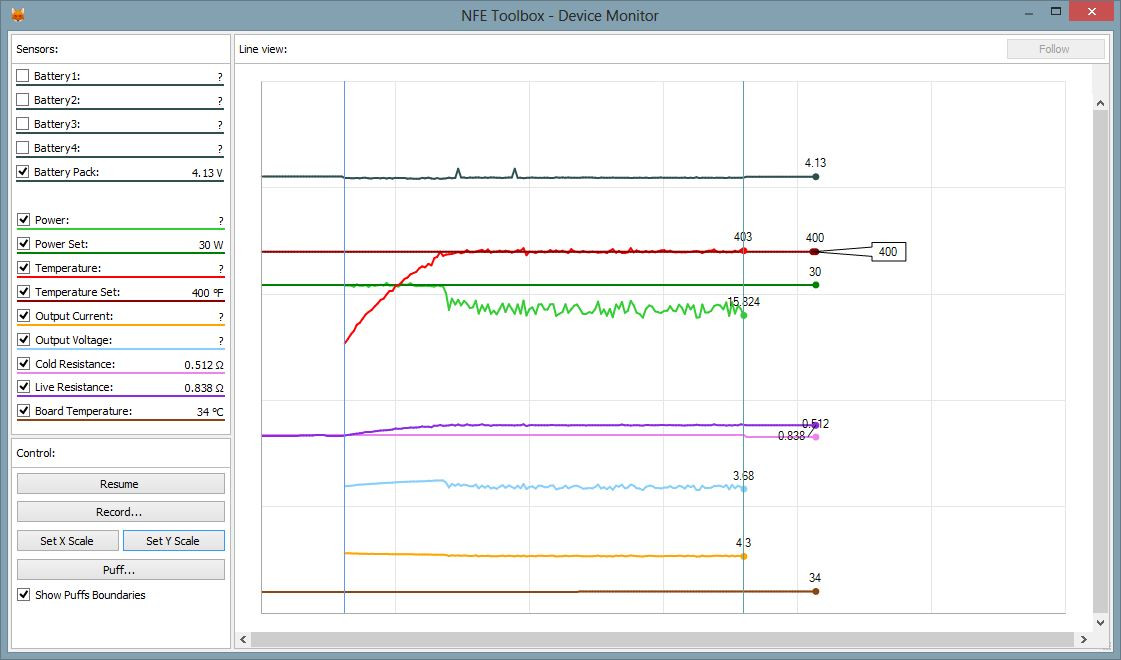




 (Do you see this also, biz? No?) I was seeing on-screen temps 10-15F below what I set, rarely, if at all, hitting my target or going over protection. I was offsetting this by simply setting temps 10-15F higher than what I normally would, but this was annoying, so I experimented with PI some more:
(Do you see this also, biz? No?) I was seeing on-screen temps 10-15F below what I set, rarely, if at all, hitting my target or going over protection. I was offsetting this by simply setting temps 10-15F higher than what I normally would, but this was annoying, so I experimented with PI some more:

 Besdies seeing detailed stats, the quality and quantity of the vapor I was watching being produced and passed through my glass bulb as I inhaled it was all the verification I needed!
Besdies seeing detailed stats, the quality and quantity of the vapor I was watching being produced and passed through my glass bulb as I inhaled it was all the verification I needed! (someone go complain in NFE forums for us
(someone go complain in NFE forums for us  )
) (I don't think
(I don't think 
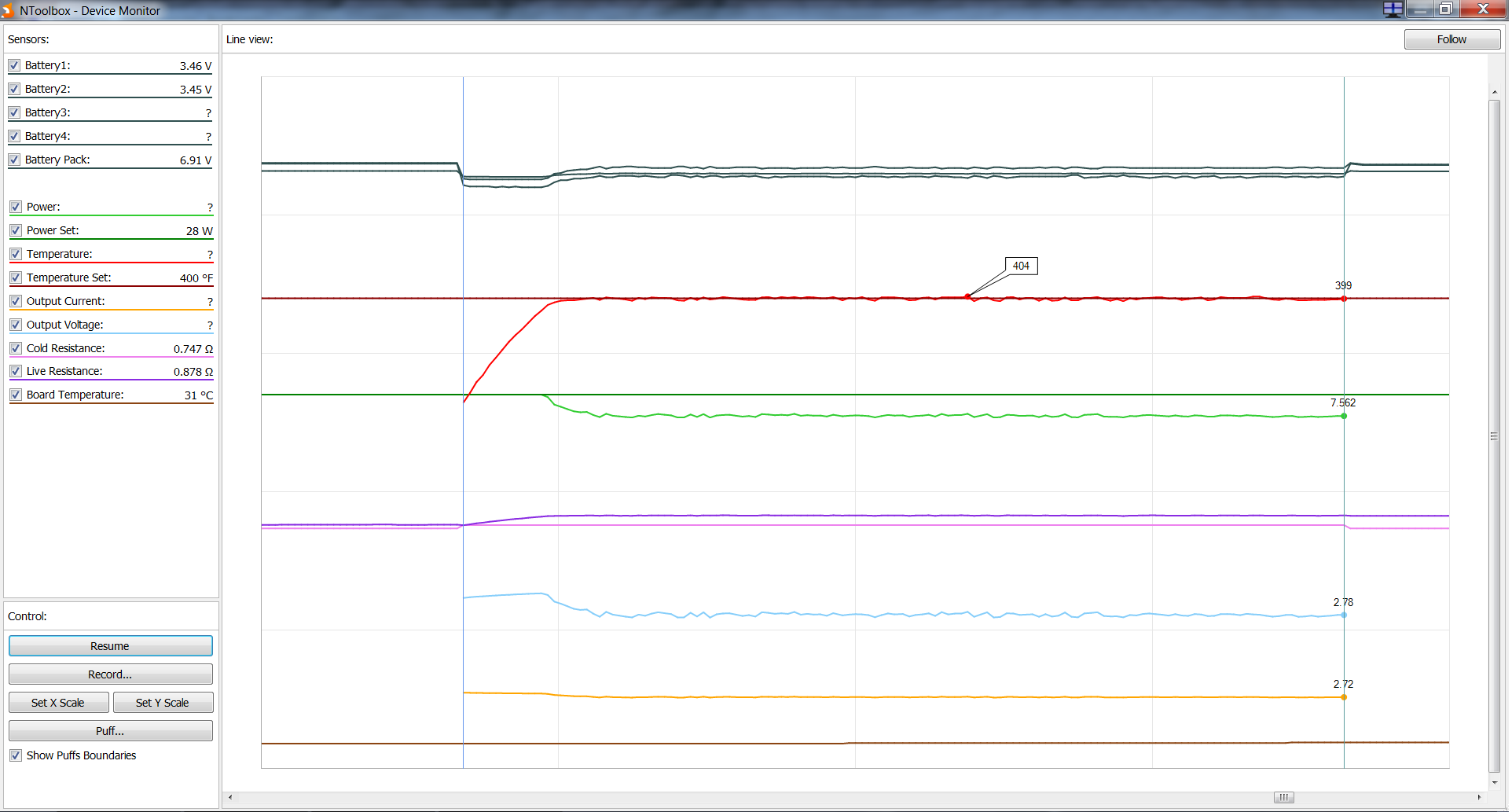
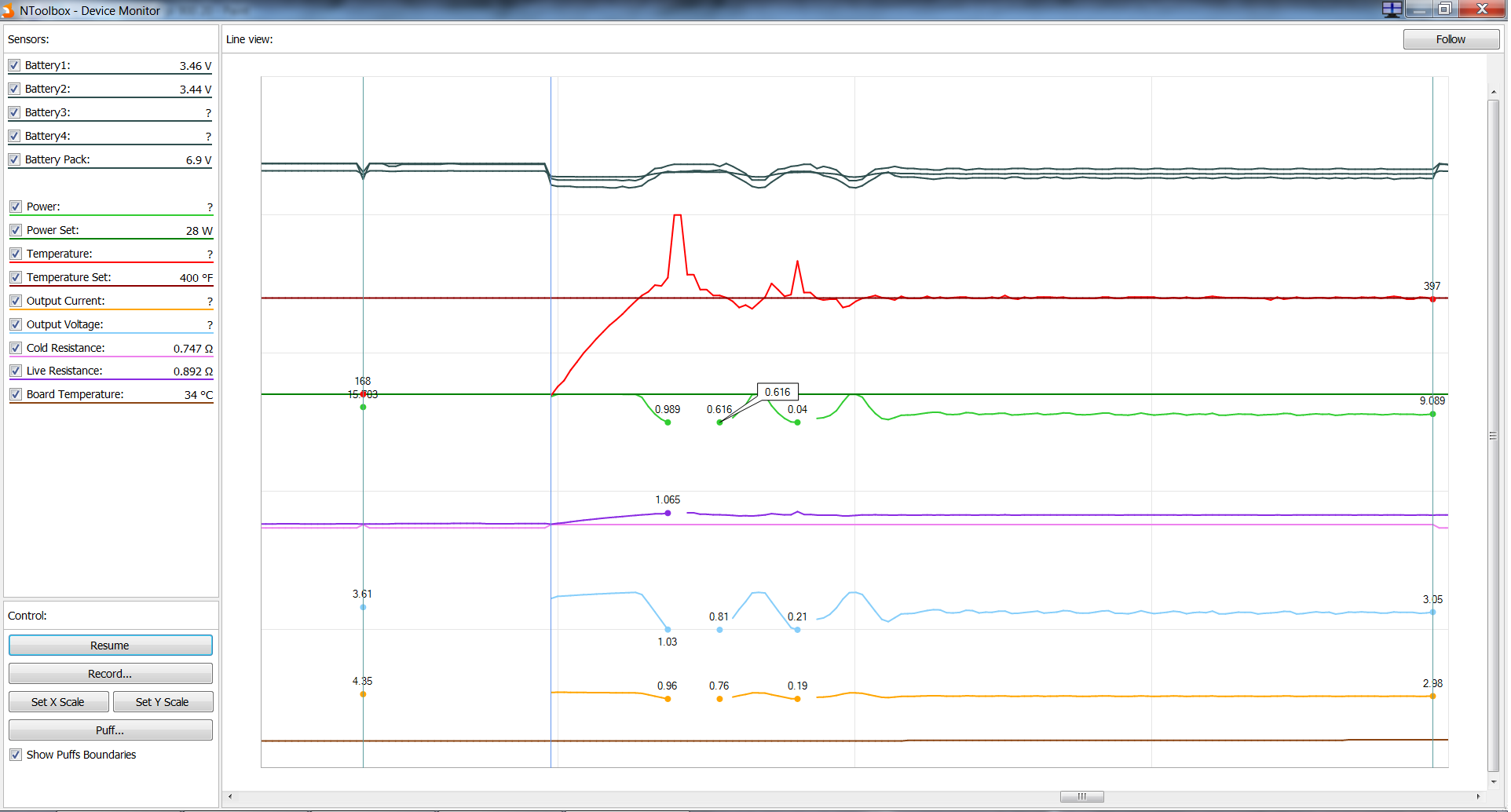
 I've put great effort into finding the cause of this, ensuring the wire leads are clean and tight, 510 connectors clean and firm. When I contact the donut with a dab tool and nudge it laterally, like when scooping up reclaim, it can make the live resistance jump, so I conclude it must be contact related, or a somewhat faulty V3 base. Despite this weirdness, it still works fine.... (i had a pic of this after the puff but missed it, but I got another example on the last mod in this post)
I've put great effort into finding the cause of this, ensuring the wire leads are clean and tight, 510 connectors clean and firm. When I contact the donut with a dab tool and nudge it laterally, like when scooping up reclaim, it can make the live resistance jump, so I conclude it must be contact related, or a somewhat faulty V3 base. Despite this weirdness, it still works fine.... (i had a pic of this after the puff but missed it, but I got another example on the last mod in this post)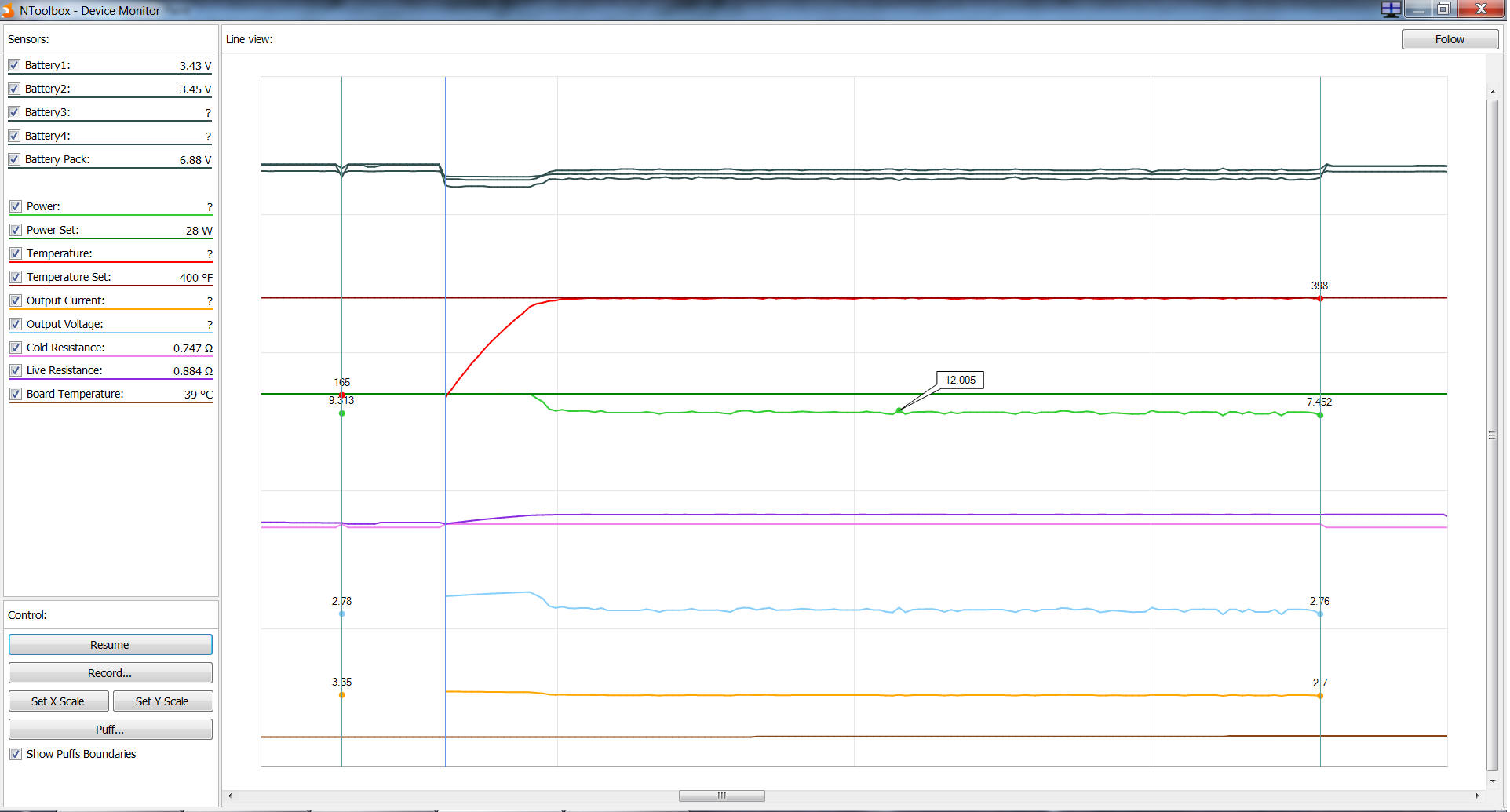
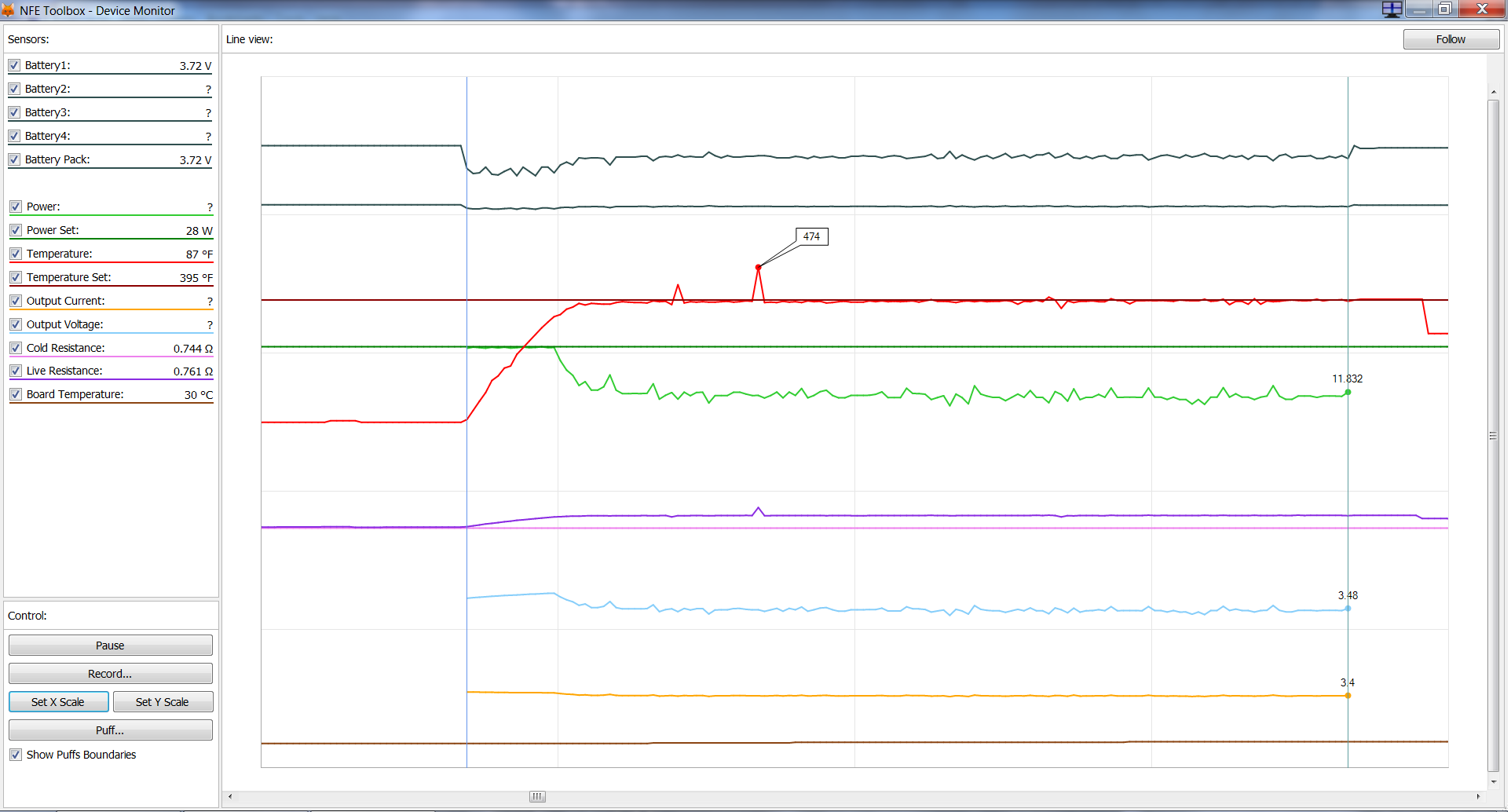
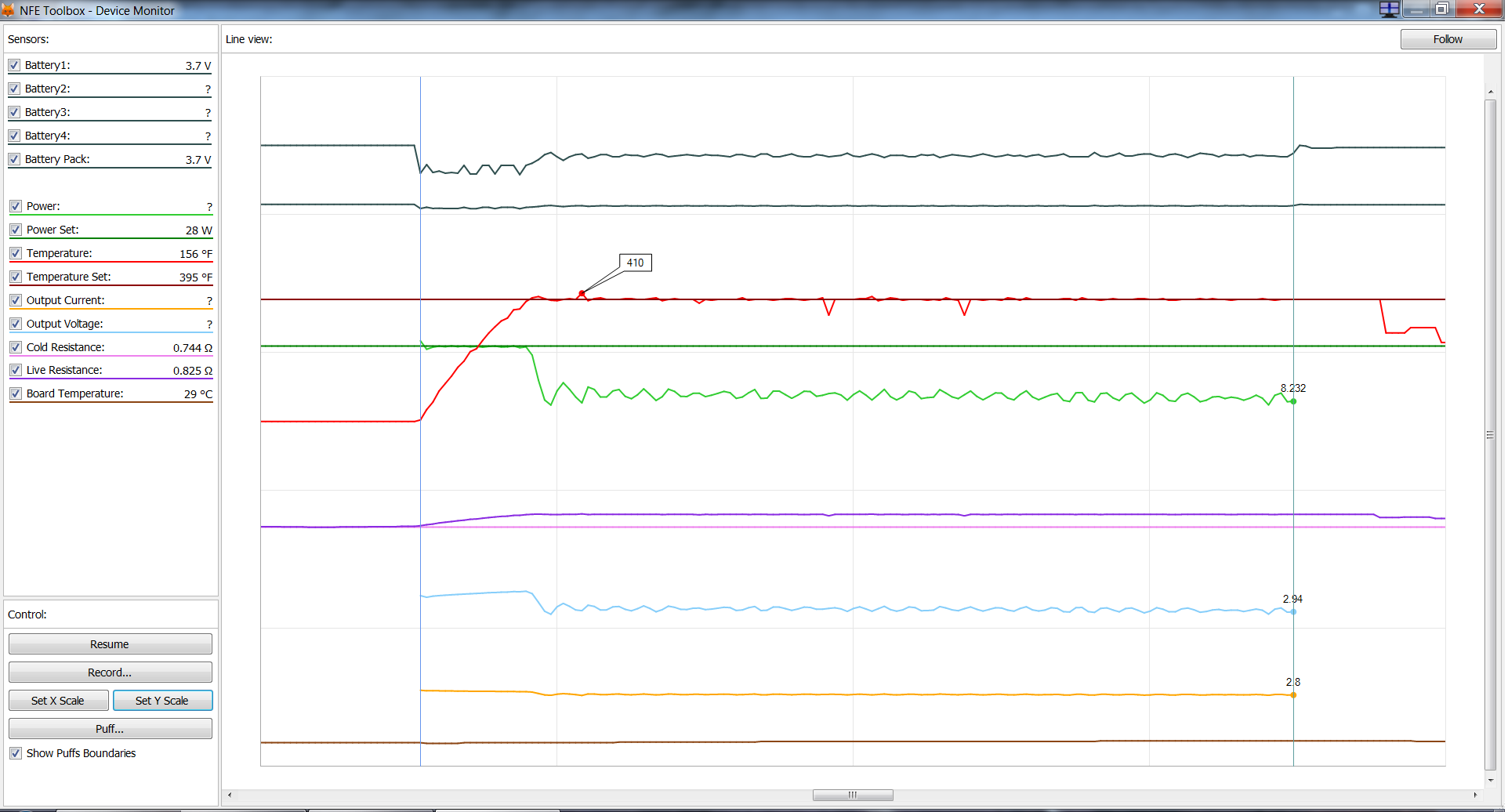

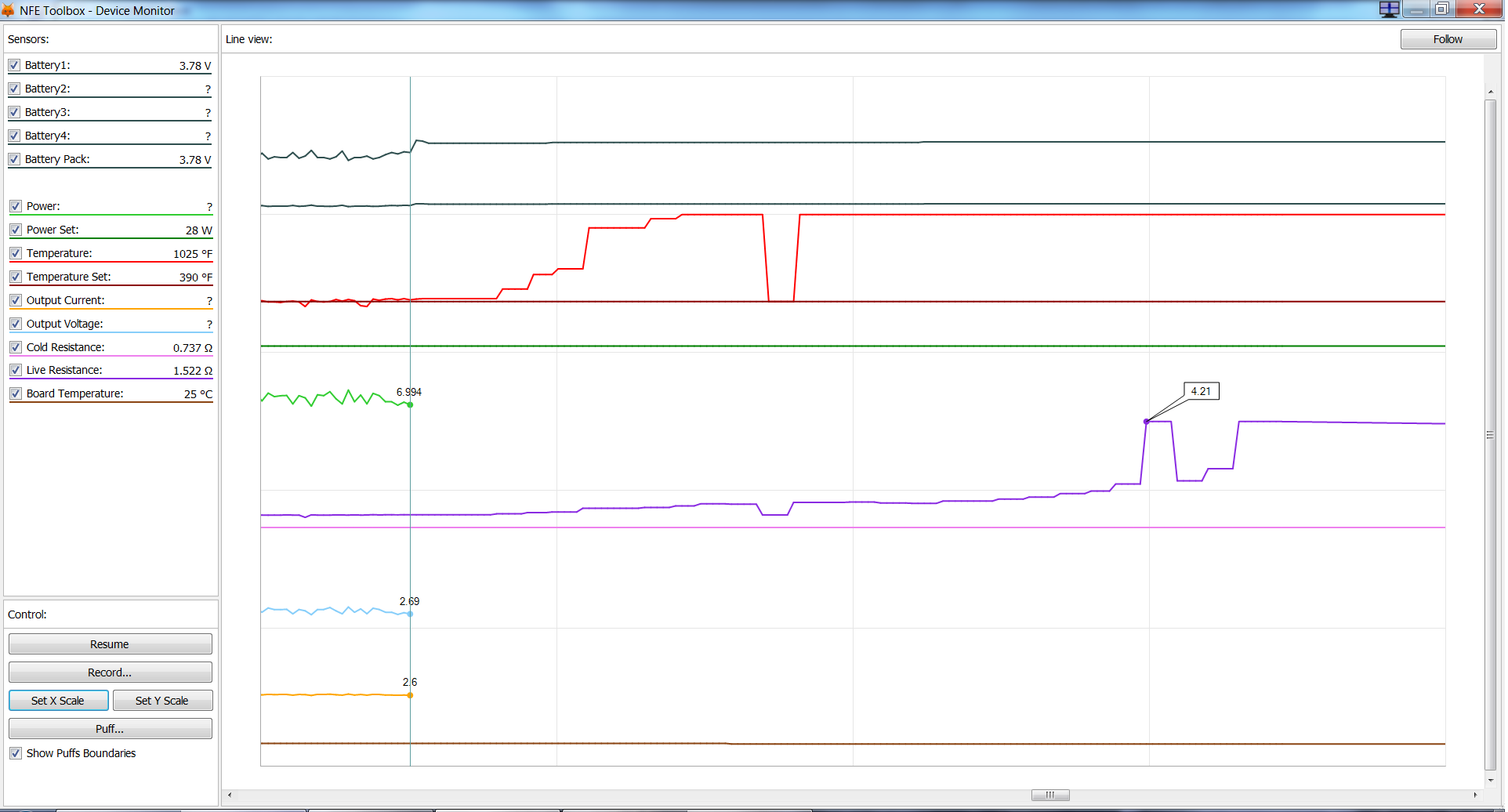
 It doesn't actually burn up oil, but the vapor stream comes in visibly pulsing, halting puffs corresponding with the oscillating wattage and transient atomizer shorts.
It doesn't actually burn up oil, but the vapor stream comes in visibly pulsing, halting puffs corresponding with the oscillating wattage and transient atomizer shorts.  No more of that! (this puff is just for a poor demonstration, no more need for that)
No more of that! (this puff is just for a poor demonstration, no more need for that)